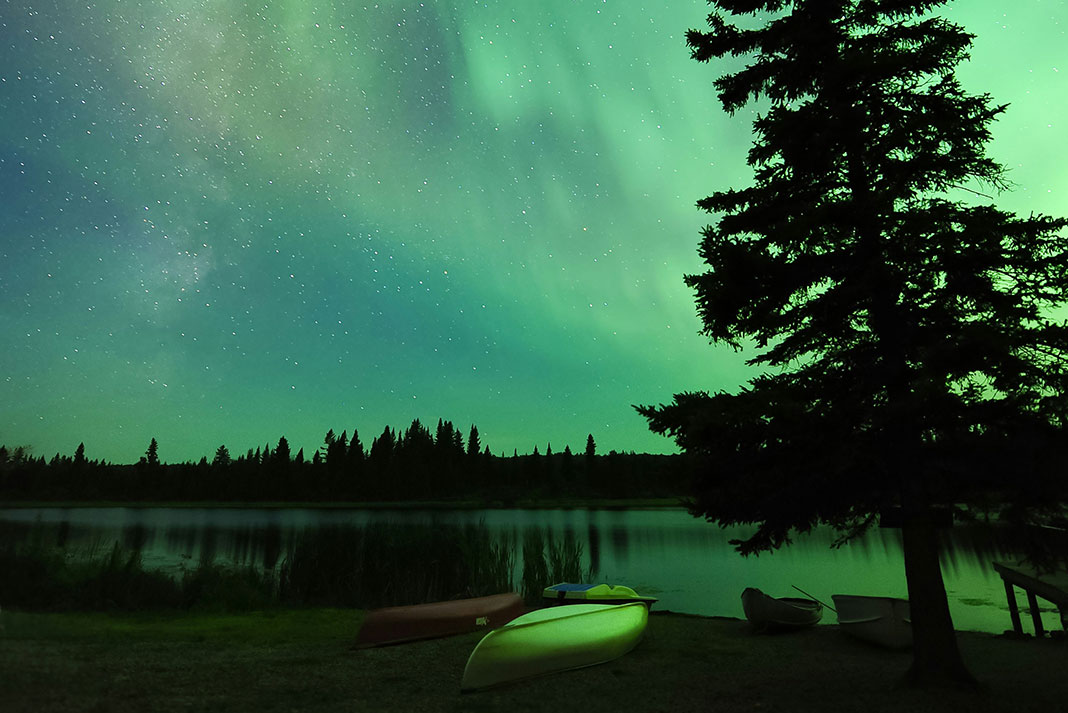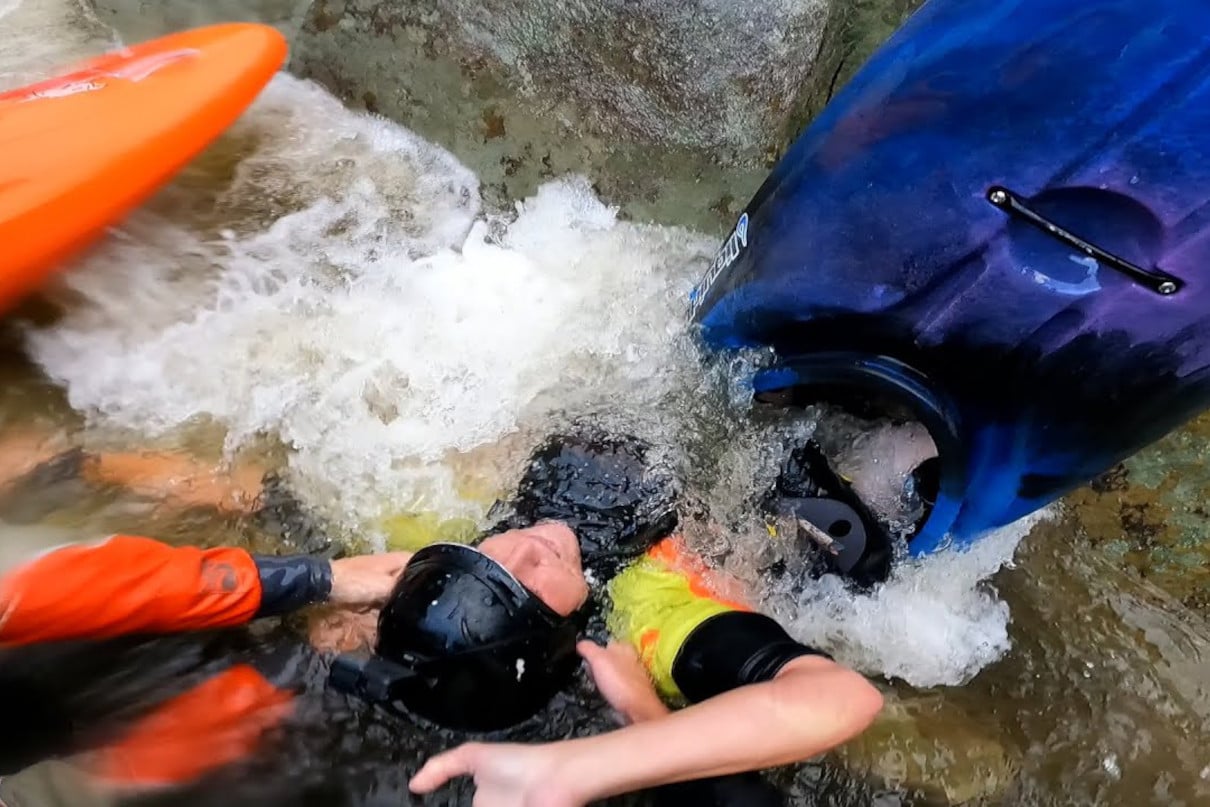On October 9th, 2024, Casey Bryant Jones received a text from brother-in-law, whitewater coach Joel Kowalski:
“Another big flare happened. Tomorrow night is supposed to be as big as the one this May!”
Casey Bryant Jones is a whitewater paddler who manages the Ottawa Kayak School at Wilderness Tours. In his spare time, he’s an adventure photographer and filmmaker. Bryant Jones has a string of epic whitewater shots under his belt from the Ottawa River to Kern River. Yet there was one shot that had remained an elusive lifelong dream: Kayaking rapids under the aurora borealis.
What is the aurora borealis?
This October, the National Atmospheric and Oceanic Administration (NOAA) issued a G4 Geomagnetic Storm Watch, sharing, “a coronal mass ejection (CME) is an eruption of solar material and magnetic fields. When they arrive at Earth, a geomagnetic storm can result. Watches at this level are very rare.”
The effects of a geomagnetic storm at this level include potential critical impacts to infrastructure and technology, and the aurora may be seen as far south as from Alabama to Northern California.
The aurora borealis, sometimes called the Northern Lights in the northern hemisphere, is a phenomenon resulting from interactions between solar wind and the Earth’s magnetic field, which protects from solar wind and cosmic radiation.
Particles from geomagnetic storms travel down the Earth’s magnetic field. When the particles interact with the gasses in our atmosphere, they sometimes produce light which appears to the human eye and cameras as the aurora borealis.
Large geomagnetic storms like the G4 storm this October are often produced by cornmeal mass ejection (CME), or plasma ejected from the sun traveling at high speeds. Generally the higher the solar wind speed, the more active and farther south the aurora is seen.

How kayaker Casey Bryant Jones captured the Aurora Borealis on The Ottawa
Initially, the forecast had called for clouds but just a half hour before sunset the sky began to clear. Bryant Jones and Kowalski decided to go for it– this was their chance to whitewater kayak under the northern lights.
They launched from Bryant Jones’ home along the Ottawa River, within the National Whitewater Park which protects the Rocher Fendu Rapids. The National Whitewater Park is a part of the greater properties of Wilderness Tours and the Ottawa Kayak school, where Bryant Jones works as a manager. Here, Wilderness Tours has protected roughly 5,000 acres around the river.
A half-moon lit the way while Bryant Jones and Kowalski began their paddle.
“We knew that we would have to basically paddle one rapid from where we would be putting in and we would have two rapids after Garvin’s Chute as we weren’t going to run Garvin’s in the dark. In both cases, we took the most relaxed line,” Bryant Jones said.
“I’d never seen the Northern Lights, but it’s genuinely been something I’ve been interested in getting the opportunity to photograph for the better part of 15 years. It was really exciting.”
How to photograph the aurora
To chase his dream shot, Casey Bryant Jones needed to come prepared. Photographers often use a technique called long-exposure photography to capture images of the night sky.
Here’s what Bryant Jones packed to create his images of the aurora while whitewater kayaking:
- K&F Concepts Travel Tripod
- Sony A1 camera with Sigma 16-28 f2.8
- Sony ZV-E1 camera with Sony 24-70 f2.8
- DJI MIC2 for audio
- GoPro 12
- Sirui Carbon Travel Tripod
All in all, this came out to two dry bags worth of equipment in order to photograph the Northern Lights.
“You have to be thoughtful with how you pack it and thoughtful with where you place it inside the kayak as well,” Bryant Jones added.
The future of the aurora borealis
If it seems like we’ve had more aurora borealis action recently than ever before, it may be because right now we are in a period of solar maximum. Solar activity is on an approximate 11-year cycle, and we are at the peak of that cycle and expected to remain in that peak until early 2026.
According to NOAA, particularly active regions on the sun tend to be repeatedly directed at the Earth from one solar rotation to the next, meaning if there was geomagnetic activity and aurora today, there might be aurora again in about 27 days.
There are a few ways to stay updated on the change of a major geomagnetic storm producing aurora in the near future:
The NOAA NWS Space Weather Prediction Center shares updates on space weather on Facebook as updates are issued. Another great gauge of real-time aurora potential is to find a north-facing live camera near you. Live cameras can often be found in National Parks, and can be used as a gauge of whether you are currently able to see the aurora near you.





